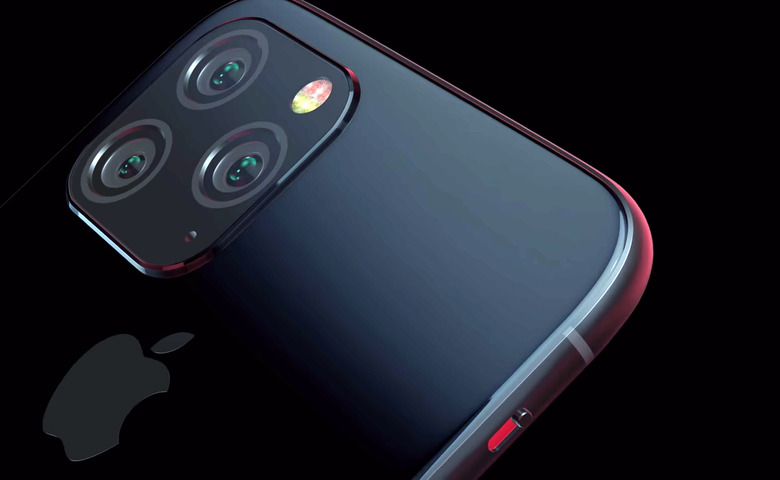I Really Wish Apple Would Steal This Revolutionary New Android Feature For The iPhone 11
Thanks to a slip-up discovered in Apple's own iOS 13 beta software a few weeks ago, we know that Apple's next-generation iPhone 11 lineup will be unveiled during a press conference on September 10th. In fact, Apple will almost certainly confirm the news later today by sending invitations to technology reporters and bloggers. During the upcoming iPhone event on the 10th, Apple is expected to confirm all of the big leaks we've seen over the past few months. The new iPhone models — which are believed to be called the iPhone 11, iPhone 11 Pro, and iPhone 11 Pro Max — will feature a design that is quite similar to last year's iPhone XR and XS phones, as well as 2017's iPhone X. Just as the company did back in 2016 when the iPhone 7 reused the same design for a third consecutive year, Apple's new iPhone 11 lineup will offer new cameras and new finishes to compensate for the familiar overall design. The iPhone 11 that replaces Apple's iPhone XR will sport a new dual-lens rear camera, while the higher-end iPhone 11 Pro and iPhone 11 Pro Max will feature a triple-lens rear camera that adds a super wide-angle lens into the mix. All three models will sport the new square camera bump we've seen so much. You know, the one people have been whining about for absolutely no reason whatsoever.
While the new phones will indeed be a minor update in terms of design, the iPhone 11 and iPhone 11 Pro handsets will be a major update where performance is concerned. They'll also be packed with some nifty new features and capabilities that have never been available before on an iPhone. We'll need to wait until September 10th to learn about all the nifty new features Apple has in store, but there's one feature the iPhone 11 series will lack that I really, really wish Apple would steal from next-generation Android flagship phones.
Apple is and has always been way ahead of its Android rivals in some ways. There are dozens of good examples, but the biggest one might be its A-series processors that are far more efficient and powerful than any chipsets that power Android phones. In fact, Apple's year-old iPhone models outperform new Android flagship phones all the time in tests. Of course, there are also many areas where Android phone makers are ahead of Apple, and today Apple fans are getting a painful reminder of one of the most important ones.
On Wednesday we showed you an early video review of an unreleased smartphone called the Vivo NEX 3. We focused on the phone's design and its gorgeous waterfall display, which spills over the sides of the phone. It creates a fantastically immersive experience that's certainly worthy of our attention, but there's another feature of the Vivo phone that might be even more exciting. As highlighted in a thread on Reddit, the NEX 3 has fast charging capabilities that are simply incredible.
Apple has always been behind the times when it comes to charging. iPhones didn't support wireless charging until 2017 despite the fact that it had already been widely available for years. Far worse is the fact that even to this day, Apple's iPhone models ship with cheap 5W chargers in the box. Even if you're willing to cough up cash for a fast charger and a USB-C to Lightning cable, iPhones still top out at only 18W. Meanwhile, Android flagship phones put those numbers to shame. The new Galaxy Note 10+, for example, ships with a 25W charger that's five times faster than the charger that comes in the box with iPhones, and it tops out at 45W.
Then there's the new Vivo NEX 3, which takes things to an entirely new level. The phone sports a huge 4,000 mAh battery that is bigger than anything we've seen on any iPhone model so far. As for charging speed, Vivo is using the phone to introduce its new 120W Super FlashCharge technology. Guess how long this incredible tech takes to charge the NEX 3's massive 4,000 mAh battery from empty to full. Give up? The answer is a mere 13 minutes. Thirteen minutes!
It's a bit too soon to see exactly how this incredible fast charging tech will impact battery longevity, but it's a phone made for early adopters so it likely won't matter very much since they'll be looking to upgrade next year anyway. We're also on the brink of some pretty major battery breakthroughs involving graphene, which will dramatically improve charging speeds and longevity.
Apple's iPhones are great and the iPhone 11 series is shaping up to be fantastic. There are still some areas where Apple is far behind the competition though, and this is one of them. Battery life remains a top pain point for smartphone users, but lightning-fast charging speeds offer tremendous relief; having to recharge your iPhone in the middle of the day wouldn't be such a big deal if a 5-minute or 10-minute charge was more than enough to get you through the rest of the day.
